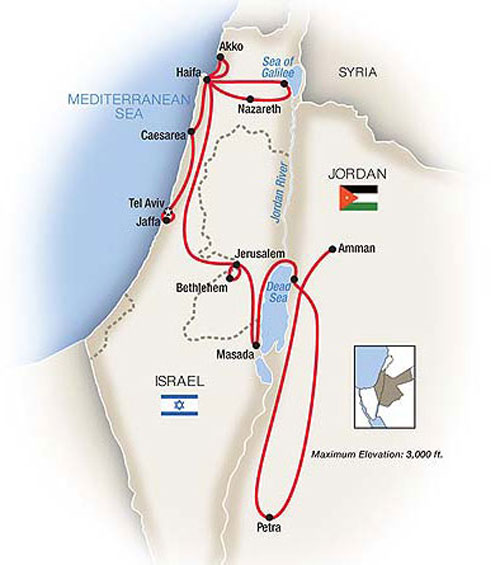
Tour of Israel and Jordan
Mike and Judy Henderson
November 14-27, 2017
I'm going to leave this map up so that you can see where we are.

+++++++++++++++++++++++++++++++++++++
11/18/2017 (Saturday) Judy had a difficult night last night. Apparently she has an allergy to feather pillows because she was sneezing and congested all night. She got very little sleep. I slept well.
Today is Shabbat so our breakfast buffet offered only what could be prepared the previous day.
We have a long day ahead of us because today we go to Akko/Acre to see the Crusader castle and then drive all the way to Jerusalem. While they refer to the city as Akko in Israel, all the references I've encountered in my readings have been to Acre.
We first visited the Al-Jazzar Mosque, also known as the White Mosque, built in 1781. The entrance to the mosque courtyard is small and unimposing.

The courtyard apparently houses some apartments and stores.
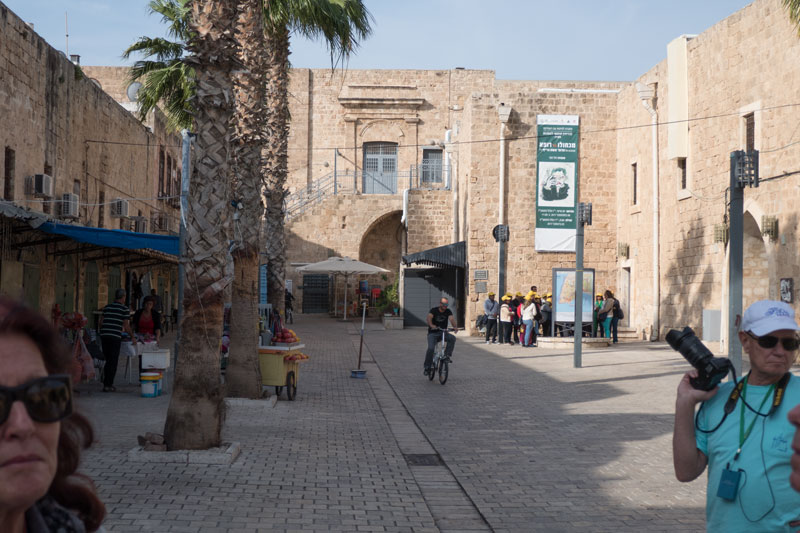
The women in our group were required to wear scarves to cover their hair. For everyone, knees and shoulders must be covered.
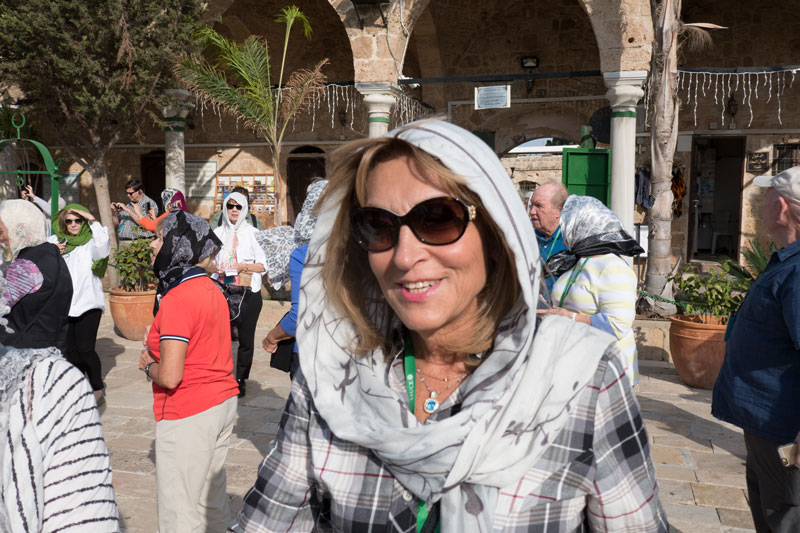
Here's the mosque.

We are entering the mosque.

And a view of the interior of the mosque. It's quite small by the standards of Christian Cathedrals. The shape built into the wall in the middle of the picture is the Mihrab, which indicates the direction of Mecca and is the direction the congregation faces to pray. Just to the right of the Mihrab is the Minbar, from which the Iman addresses the congregation.
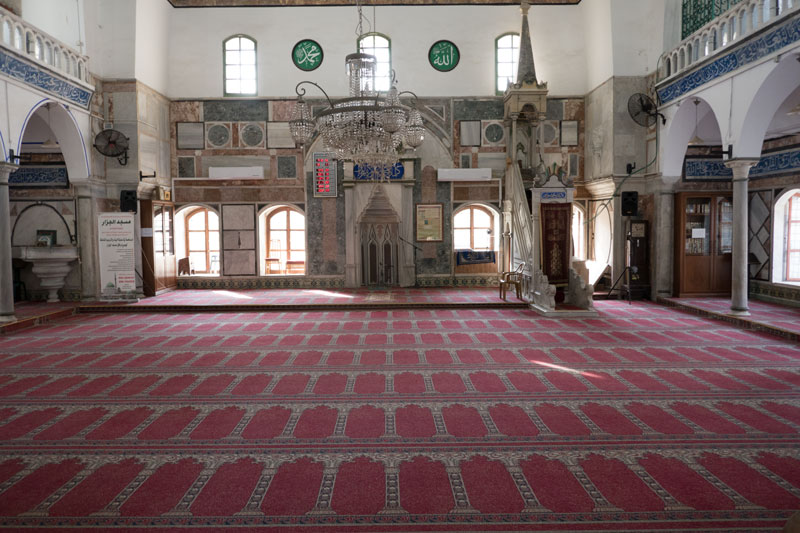
When we left the mosque, we headed to the crusader castle.
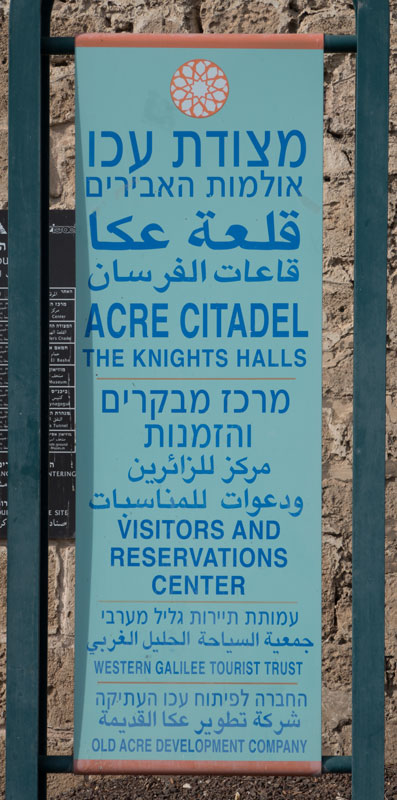
It's a huge facility which is essentially impossible to capture in pictures - all I can do is show pieces.
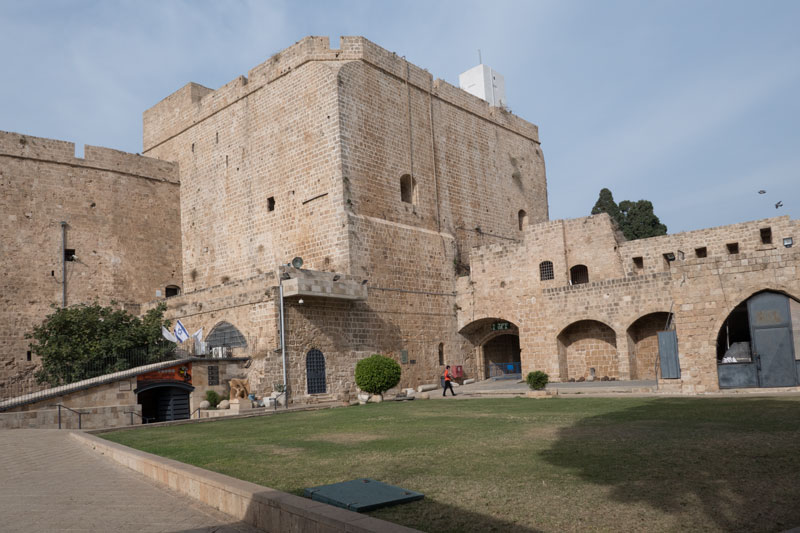
But first, a VERY short introduction to the Crusades. There were three crusades to the Holy Land, the First Crusade (1095-1099), the Second Crusade (1147-1149), and the Third Crusade (1189-1192). In the end, they all failed. For more information, follow the links provided here.
Here's Nancy and Richard getting ready to enter the complex.
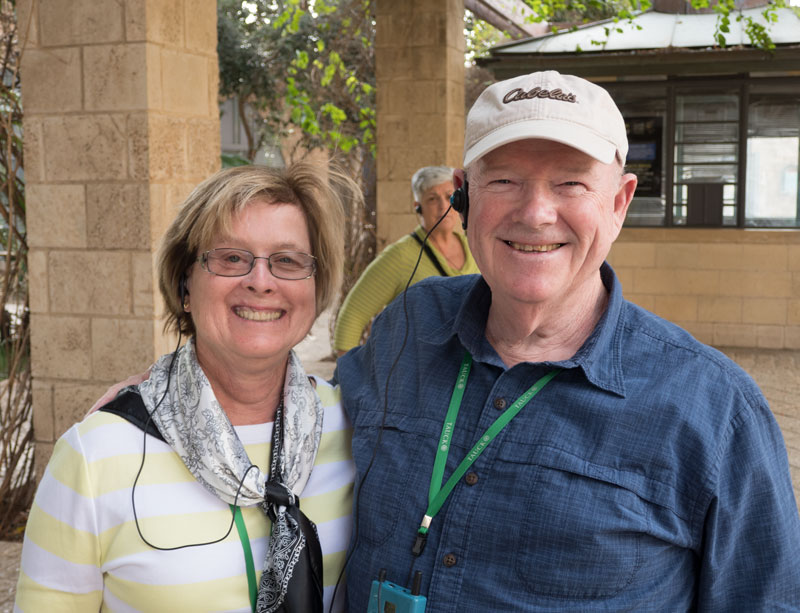
The crusader castle was destroyed by the Arabs after they conquered the Crusaders, to prevent the Crusaders from using it if they returned. Over time, the city of Acre was built over the ruins. Excavations of the ruins under the city have revealed what is visible today.
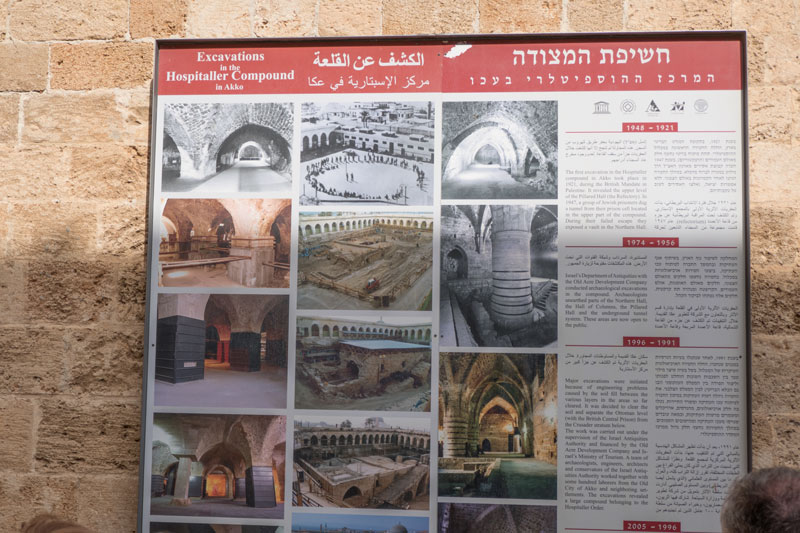
Here's the description of the excavations.

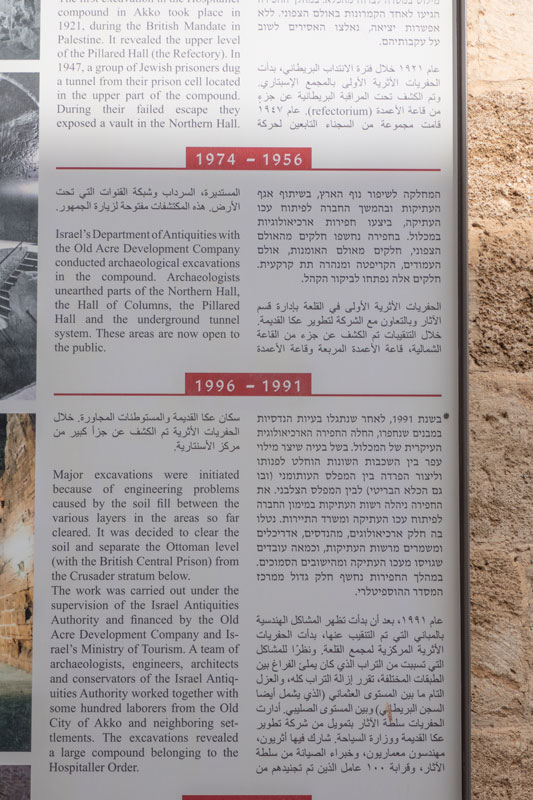
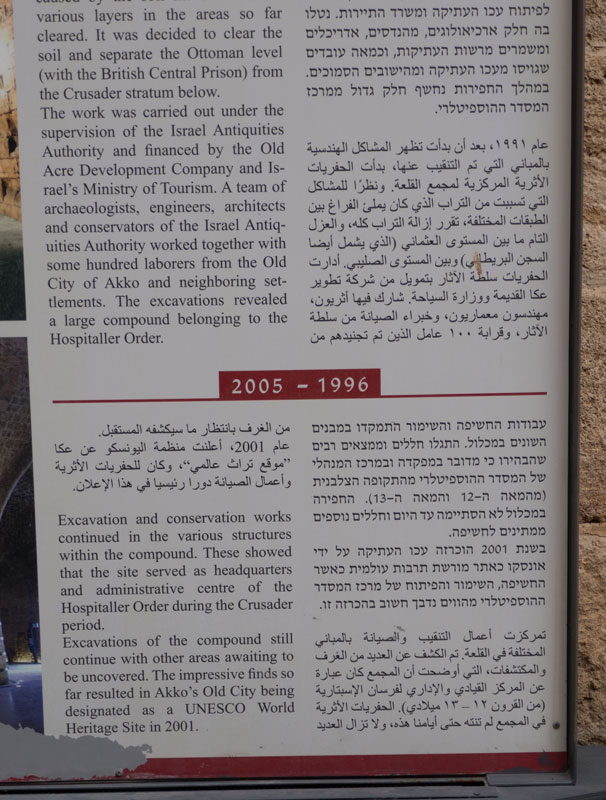
We went through many of the underground rooms and passages, but this one stood out - the dining hall for the knights.
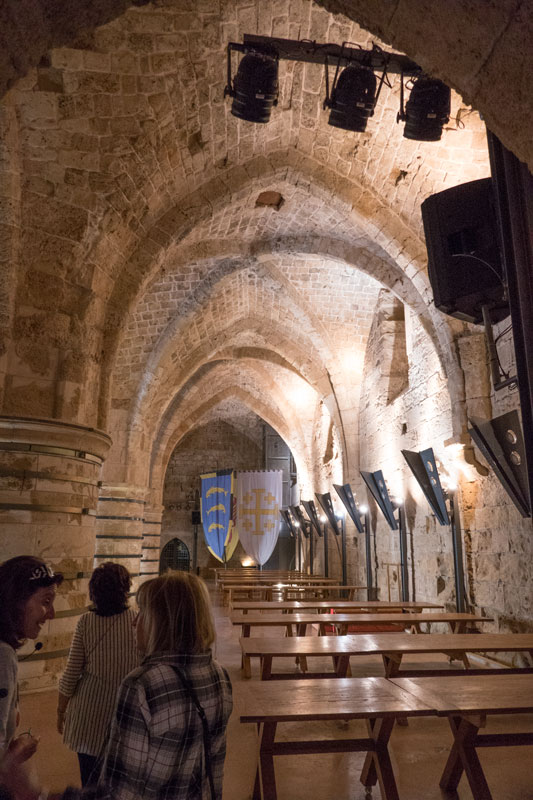
A part of the fortress was used by the British as a prison during the British Mandate and when we left the excavations we were in a courtyard next to the prison. It's now a museum.
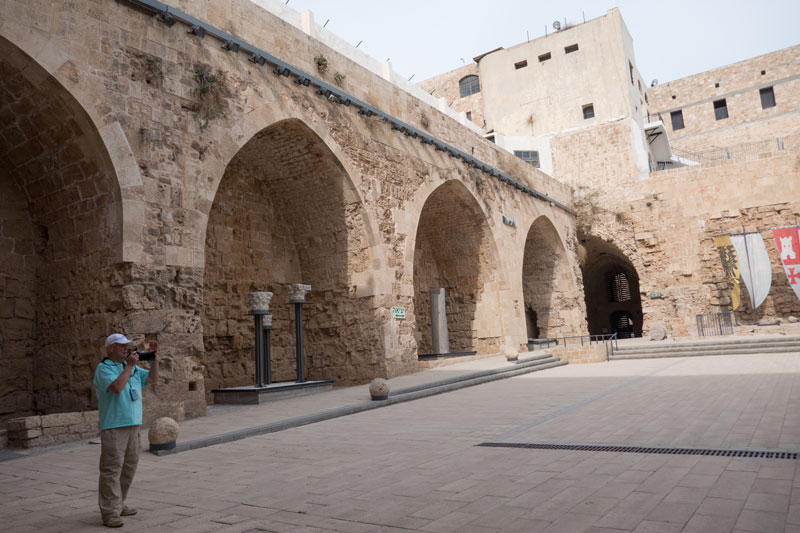
Our guide, Zivit, told us the story of her parents who were both involved in the Palmach prior to Israel's Independence. Her father was arrested during that time and imprisoned here. He and other prisoners attempted to tunnel out of the prison and the remnants of their efforts can still be seen. Here, Zivit is pointing to the place where they dug their tunnel.
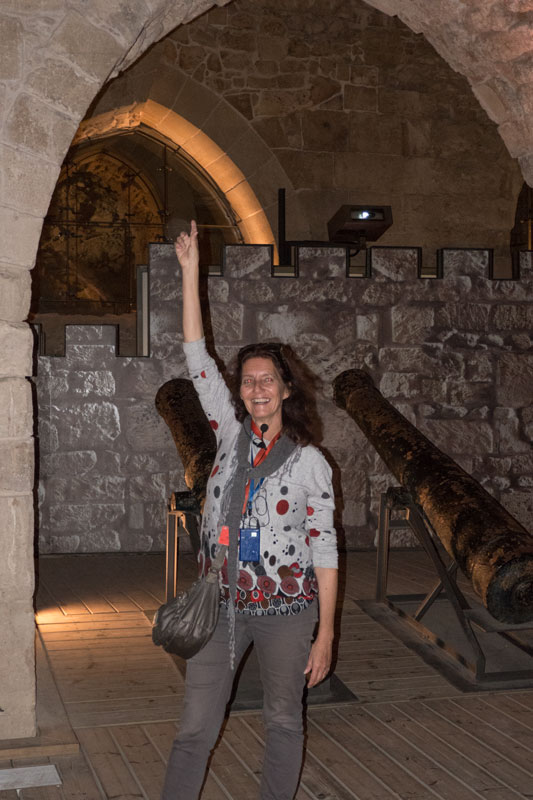
After the tour of the prison, we walked the narrow street of Acre to the Templar's Tunnel which was only discovered in 1994.
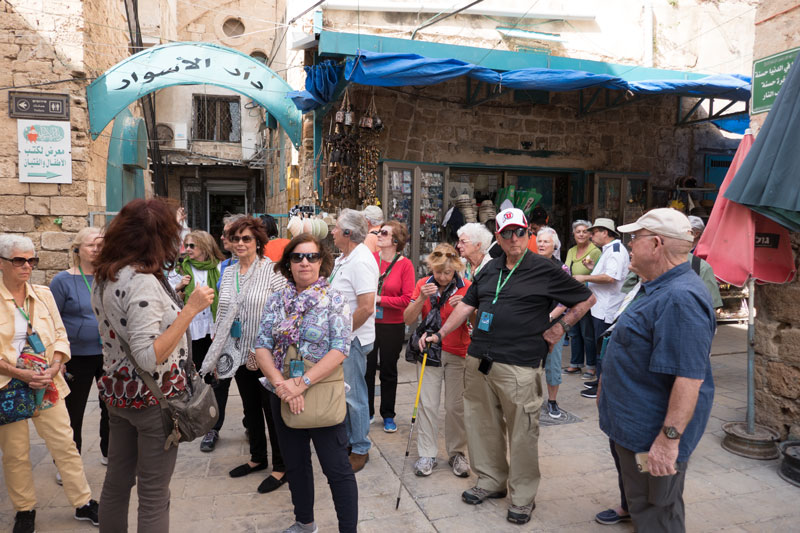
Here we are in the tunnel.
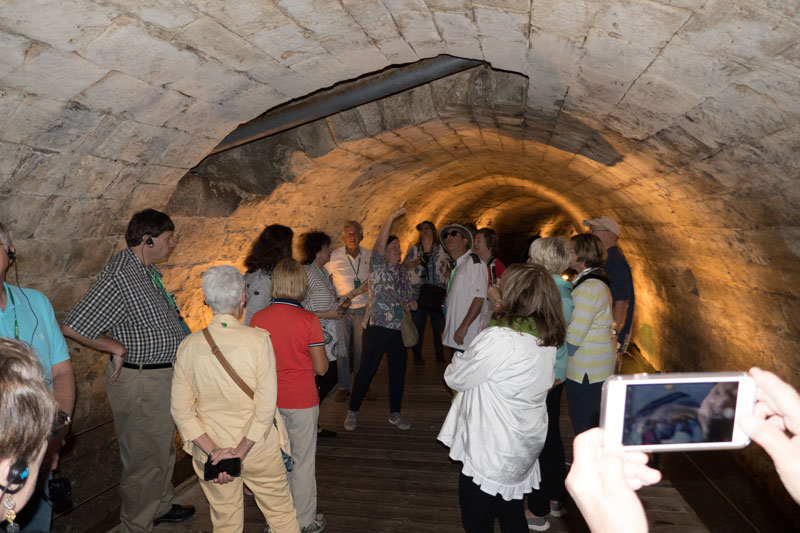
When we came out of the tunnel,
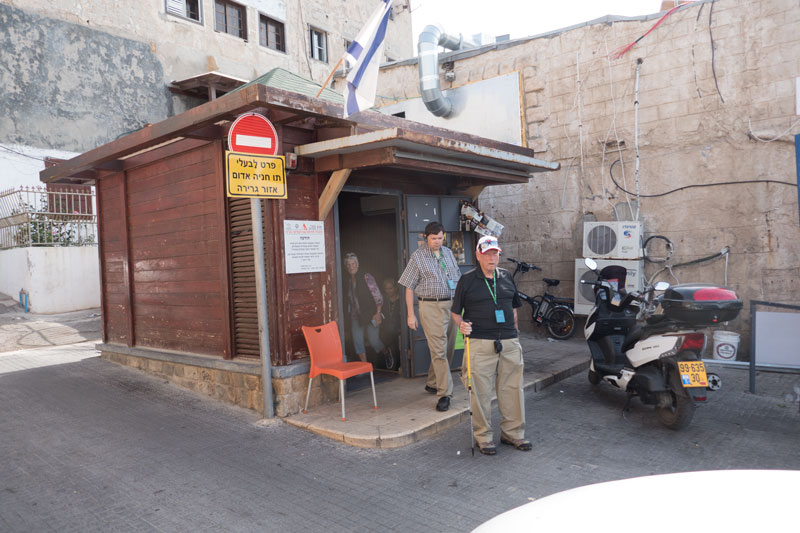
We were right on the Mediterranean. It is theorized that the tunnel served for purposes of evading tax or customs collectors.

We walked a short distance to a nice seafood restaurant, Uri Buri, where we had a excellent seafood meal.

After lunch, the owner, Uri Jeremias, came and addressed the group. He's owned this restaurant for many years.
[Added note: Uri's restaurant and hotel were fire bombed on May 11, 2021 by Arab terrorists. He has since rebuilt.]

After lunch, it was back on the bus for our trip to Jerusalem.
We arrived in Jerusalem about 3:30pm at the Waldorf Astoria Hotel - a very nice hotel. Tauck really outdid themselves with this hotel.
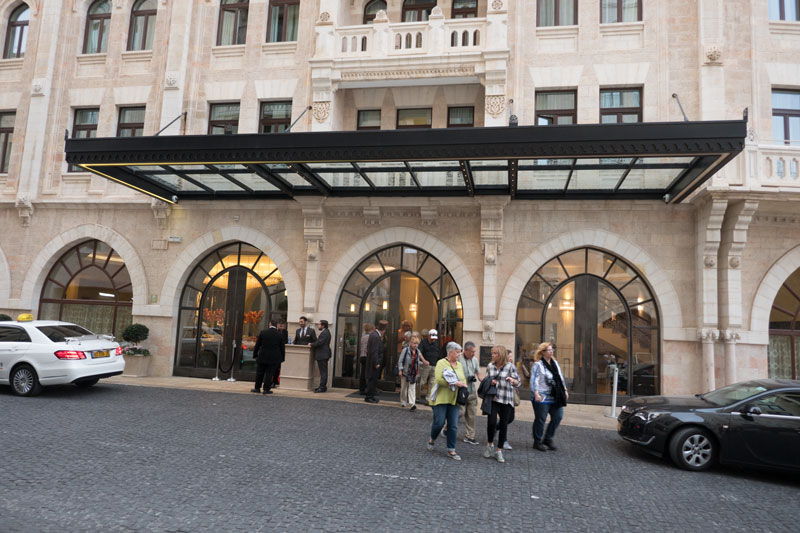
After going to the rooms, we met downstairs at 4pm to go to the Church of the Holy Sepulchre. By tradition, the church contains the tomb where Jesus was laid after his crucifixion.
After a short walk through a shopping mall, we arrived at the walls of the old city.

And entered at the Jaffa Gate.

Jerusalem reminds me somewhat of Venice. They both have narrow alleyways and the buildings are not set off from the rest of the city. For example, La Fenice, the opera house in Venice is bump against all the other buildings.
Here we are walking down one of the alleyways to the church.
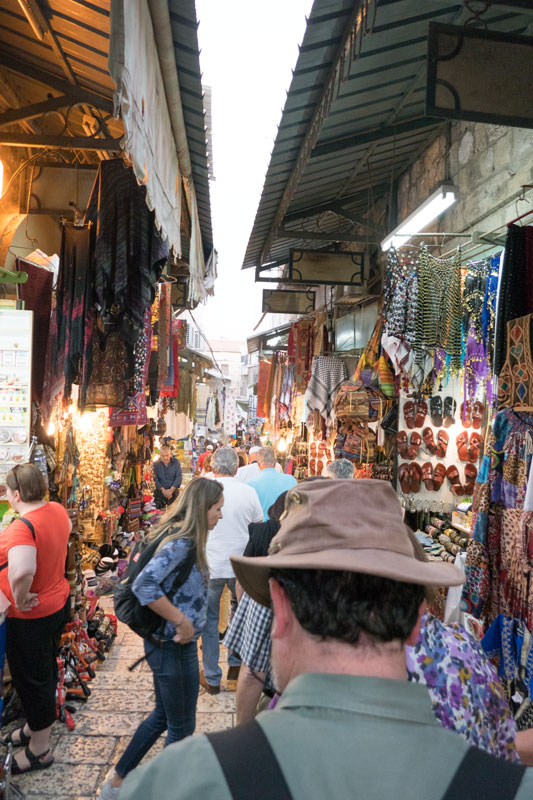
When we arrived at the courtyard in front of the church, it was mobbed. Mark checked and the wait was approximately two hours to enter.

Judy and I decided to go back to the hotel. Judy was so exhausted from not sleeping the night before that she went to sleep about 6pm and slept until about 3am when we got up and I worked on this blog.
Since we didn't make it to the Holy Sepulchre, I searched the web and found some pictures of the interior. Here's one. The structure in the center is called the Holy Edicule (also spelled Aedicule).

And another.

I also found a story about a ceremony at Easter where the clerics emerge from the Aedicule with a lit candle and then light some of the pilgrims' candles. The pilgrims then light other pilgrims' candles until the fire is passed to the end of the line of pilgrims, symbolizing, I suppose, the spread of Christianity through the world. Just the thought of that in a building with limited exits scares the heck out of me.


Our adventure continues here